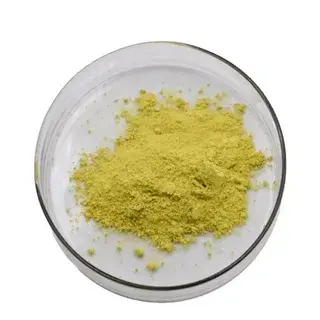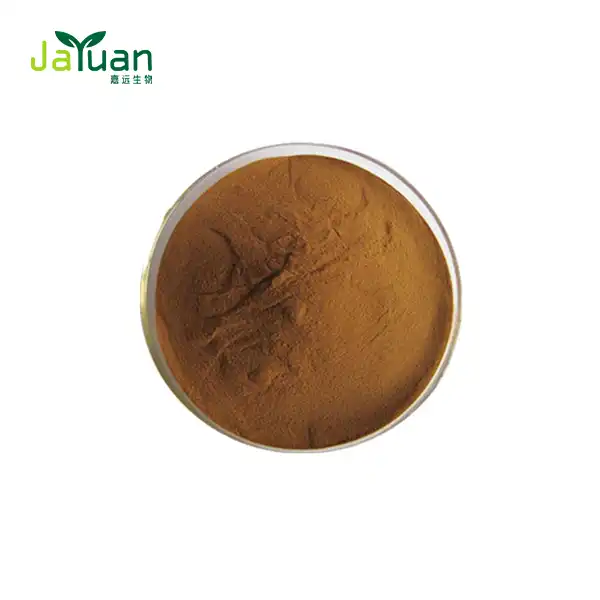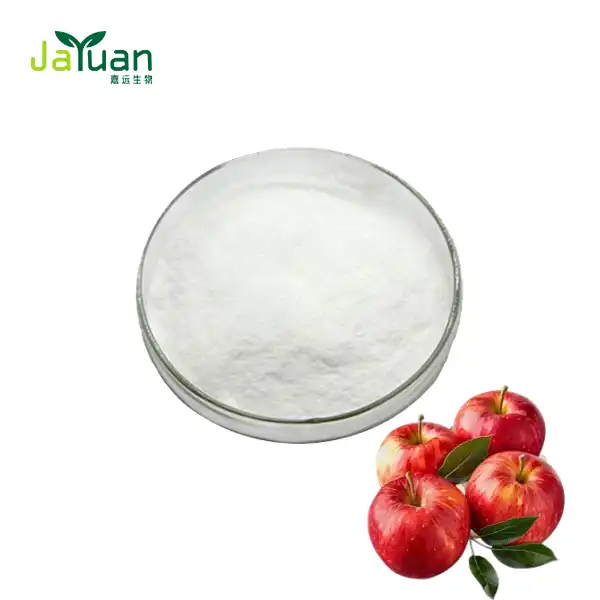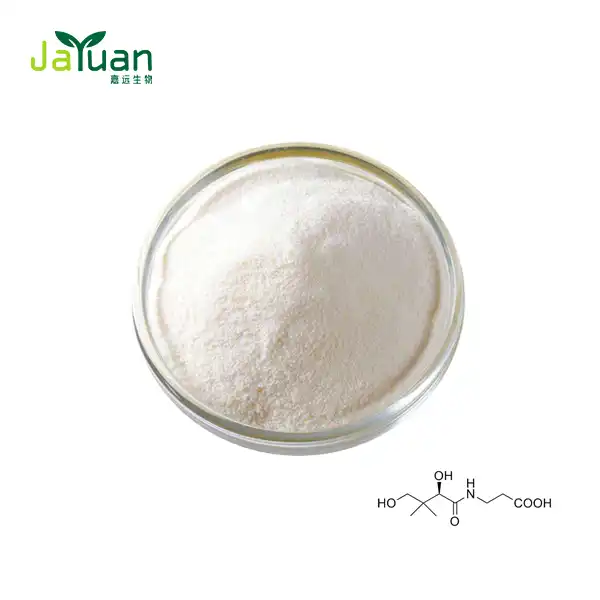Which lichen is used in drug?
Lichens, those fascinating organisms that are a symbiotic partnership between fungi and algae or cyanobacteria, have been used in traditional medicine for centuries. In recent years, the pharmaceutical industry has taken a keen interest in lichen extract due to its potential medicinal properties. But which lichen species are most commonly used in drug development, and what makes them so valuable? Let's explore the world of medicinal lichens and their applications in modern pharmacology.

The Most Prominent Lichens in Pharmaceutical Research
When it comes to Lichen Extract Powder in drug development, several species stand out for their potential therapeutic properties:
- Barbata usnea: Otherwise called "Elderly person's Facial hair," this lichen contains usnic corrosive, a compound perceived for its powerful antibacterial and antifungal properties. Usnic corrosive has been displayed to restrain the development of different pathogenic microorganisms, making it a subject of interest for growing new antimicrobial medicines.
- Cetraria islandica: Regularly called Iceland greenery, this lichen has been generally utilized in society medication to address respiratory illnesses and stomach related issues. It is known for its adhesive properties, which can calm and safeguard mucous films, consequently giving alleviation to hacks and gastrointestinal uneasiness.
- Lobaria pulmonaria: Known as "lung lichen," it has a long history of use in traditional medicine for treating lung and respiratory disorders. The name reflects its historical use for respiratory health, and its bioactive compounds are believed to contribute to its therapeutic effects.
- Parmelia sulcata: This widespread lichen species contains various compounds that may offer potential anti-inflammatory and antioxidant effects. These properties suggest that Parmelia sulcata could be beneficial in managing conditions related to inflammation and oxidative stress.
- Cladonia rangiferina: Also called "reindeer lichen," it has been studied for its potential antibiotic properties. This lichen is of interest due to its ability to produce compounds that may help combat bacterial infections, adding to the growing list of lichen species with promising medicinal applications.
This lichen is of interest because of its capacity to deliver builds that might be useful to battle bacterial diseases, adding to the developing rundown of lichen species with promising restorative applications. These lichens, among others, stand out of scientists because of their extraordinary substance organizations and likely therapeutic applications. The lichen extricate got from these species is being read up for different remedial purposes, from antimicrobial therapies to potential disease battling properties.
The Bioactive Compounds in Lichen Extract
What makes lichen extract so intriguing to pharmaceutical researchers? The answer lies in the diverse array of bioactive compounds found in lichens. Some of the most important compounds include:
- Usnic corrosive: A strong antibacterial and antifungal specialist tracked down in numerous lichen species, especially in the sort Usnea. Usnic corrosive has been generally read up for its capacity to repress the development of microscopic organisms and parasites, making it a significant compound in the improvement of new antimicrobial medicines. Its adequacy against different microorganisms features its likely applications in clinical and drug fields.
- Polysaccharides: Carbohydrates with anti-inflammatory and immunomodulatory properties that are complex. These polysaccharides can impact safe reactions, upgrading the body's capacity to guard against microbes while additionally adjusting irritation. Their presence in lichen species adds to the helpful capability of lichen removes in overseeing resistant related and fiery circumstances.
- Depsides and depsidones: Compounds unique to lichens that have demonstrated antioxidant, antimicrobial, and anti-inflammatory effects. These compounds play a crucial role in protecting lichens from environmental stressors and pathogens. Their biological activities suggest potential applications in developing treatments for oxidative stress, infections, and inflammatory diseases.
- Dibenzofurans: Another class of compounds found almost exclusively in lichens, with potential anticancer and antimicrobial properties. Dibenzofurans are of interest for their ability to inhibit cancer cell growth and combat microbial infections, contributing to the ongoing research into lichen-derived therapeutic agents.
- Phenolic compounds: These substances add to the cancer prevention agent properties of lichen removes. Phenolic compounds are known for their capacity to kill free revolutionaries, subsequently decreasing oxidative pressure and likely harm to cells. Their presence in lichens highlights the potential medical advantages and remedial purposes of these regular items.
The combination of these bioactive compounds makes Lichen Extract Powder bulk a promising source for drug development. Researchers are continuously exploring new ways to harness these natural substances for therapeutic purposes.

Applications of Lichen Extract in Modern Medicine
The potential applications of lichen extract in modern medicine are diverse and exciting. Here are some areas where lichen-derived compounds are being studied or already used:
- Antimicrobial treatments: Usnic acid and other lichen compounds have shown promise in fighting antibiotic-resistant bacteria.
- Respiratory wellbeing: Certain lichen extricates are being explored for their true capacity in treating asthma, bronchitis, and other respiratory circumstances.
- Disease research: Some lichen compounds have exhibited enemy of growth properties in lab studies, opening up new roads for disease treatment research.
- Skincare and dermatology: Lichen separates are utilized in a few skincare items for their antimicrobial and mitigating properties.
- Antioxidant supplements: The high antioxidant content of some lichens makes them potential candidates for dietary supplements.
- Pain management: Certain lichen compounds are being studied for their potential analgesic properties.
While many of these applications are still in the research phase, they highlight the immense potential of lichen extract in drug development and medical treatments.
It's vital to take note of that while lichens show extraordinary commitment in clinical exploration, reaping them from the wild can be dangerous.Lichens develop gradually, and over-gathering can disturb environments. Consequently, practical development strategies and engineered creation of lichen compounds are areas of dynamic examination.
The universe of lichen separate and its true capacity in drug improvement is a captivating field that keeps on developing. As examination advances, we might see more lichen-inferred intensifies advancing into standard medication, offering new answers for wellbeing challenges.
Assuming that you're keen on finding out about plant separates and their expected applications, including lichen extract, go ahead and out to us at sales@jayuanbio.com.Our team at Xi'an Jiayuan Bio-Tech is dedicated to producing high-quality plant extracts and can provide more information on this exciting field.
References
1. Shrestha, G., & St. Clair, L. L. (2013). Lichens: a promising source of antibiotic and anticancer drugs. Phytochemistry Reviews, 12(1), 229-244.
2. Zambare, V. P., & Christopher, L. P. (2012). Biopharmaceutical potential of lichens. Pharmaceutical Biology, 50(6), 778-798.
3. Boustie, J., & Grube, M. (2005). Lichens—a promising source of bioactive secondary metabolites. Plant Genetic Resources, 3(2), 273-287.
4. Ranković, B., & Kosanić, M. (2015). Lichens as a potential source of bioactive secondary metabolites. In Lichen Secondary Metabolites (pp. 1-26). Springer, Cham.
5. Molnár, K., & Farkas, E. (2010). Current results on biological activities of lichen secondary metabolites: a review. Zeitschrift für Naturforschung C, 65(3-4), 157-173.








